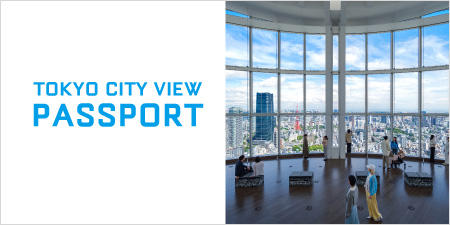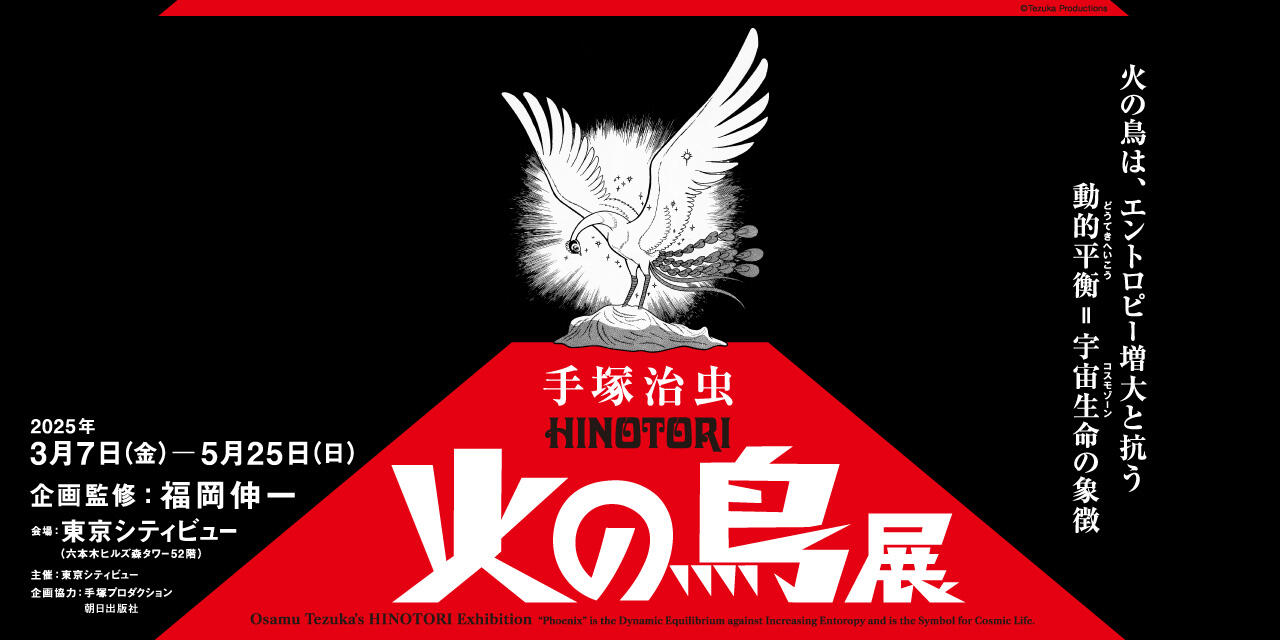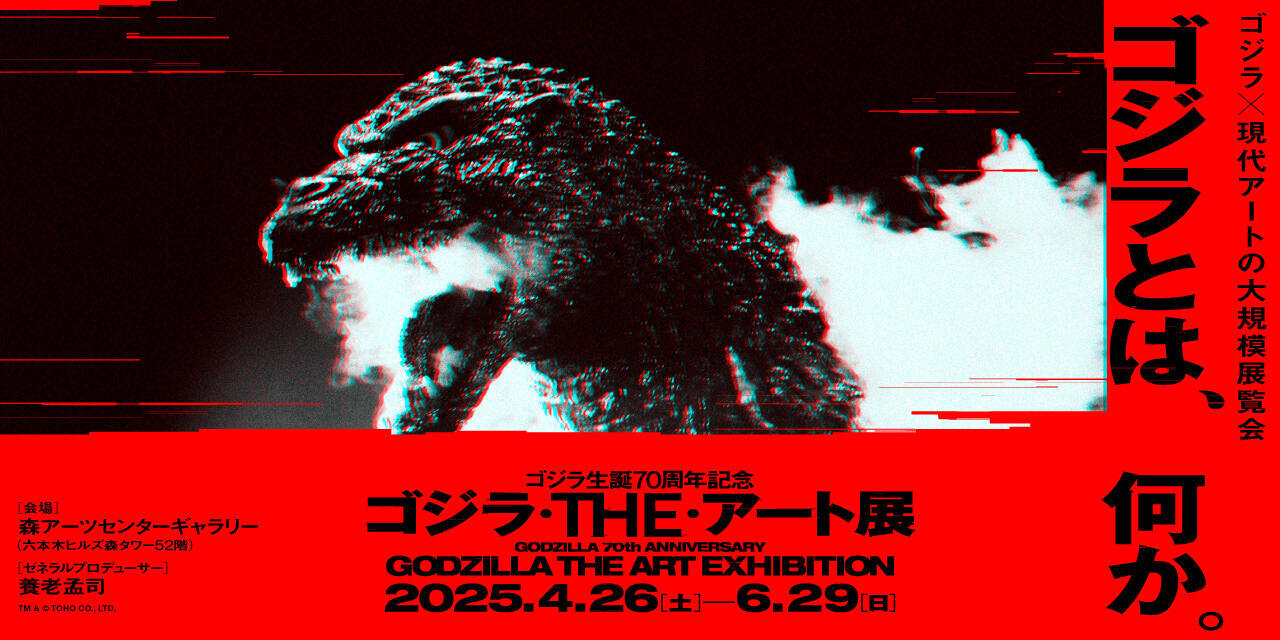Exhibition Highlights
Everything from Earliest to High-Profile and New Works in a Single, Comprehensive Retrospective
Chim↑Pom: Happy Spring will bring together a large selection of the extraordinary sextet’s best-known work, from early classic “Thank You Celeb Project - I’m BOKAN” (2007-2008) to the A-bomb-themed Making the Sky of Hiroshima “PIKA!” (2009) and LEVEL 7 feat. “Myth of Tomorrow” (2011); numerous larger works such as the “Build-Burger” series (2016/2018); small, humorous pieces, and an array of immersive/ experiential works, in what will be the world’s first comprehensive retrospective exhibition of work by the internationally renowned Chim↑Pom from Smappa!Group.
The Exhibition Personally Designed by the Artists to Astound and Delight
This will be distinctly different to the usual, chronologically-arranged retrospective. Works will be exhibited by sections such as “Cities and Publicness,” “Street” and “Don’t Follow the Wind,” and multiple viewing routes provided to encourage diverse readings of the exhibition. Visitors will also find themselves plunged into some dynamic exhibition spaces, including a large asphalt-paved street appearing on the bilayer structure within an exhibition gallery added as part of the spatial design, and an entire gallery space composed into a single giant installation featuring multiple works. A fascinating lineup of events and performances is also planned on site for the duration of the exhibition.
Seven Newly-Commissioned Works, Including an On-Site Nursery
Joining Visitors to Ponder the Concept of “Publicness”
The exhibition will feature seven (7) new works, including the latest version of “SUPER RAT” which indeed is Chim↑Pom from Smappa!Group’s self-portrait, a new sound installation conceived around the event of Ellie giving birth in 2020, a nursery (daycare center) being set up at the exhibition in a new art project Crying Museum inspired by the child-raising challenges of Chim↑Pom from Smappa!Group’s generation, and more.
Joining Visitors to Ponder the Concept of “Publicness”
Not long ago, Chim↑Pom from Smappa!Group built a private road in the grounds of their studio on private land, allowing anyone to pass through. In Taiwan, they created a long street passing through the interior and outdoor spaces of an art museum, and formulated a set of original rules to apply there. By this use of the “street” as a theme, they urge us to turn our thoughts to matters of “publicness,” and “the public and individual.”
Revisiting Debates and Dialogues around Works by Chim↑Pom from Smappa!Group
Some of Chim↑Pom from Smappa!Group’s past projects have ignited debate, those on Hiroshima and the Great East Japan Earthquake proving particularly controversial. This exhibition will revisit such controversies, examining them from multiple viewpoints and presenting not only the works themselves but timelines and related material, and setting out the arguments for and against the works.
Things Revealed Ten Years on from the 2011 Quake, and Now amid the Pandemic
Ever since the 2011 Great East Japan Earthquake, Japanese artists have been working more than ever to help build a better society, and Chim↑Pom from Smappa!Group is no exception, undertaking multiple projects after the disaster. Now, ten years on, they will revisit these projects.
It so happens that a number of Chim↑Pom from Smappa!Group’s projects of the past decade, such as the “border”-themed project carried out on the Mexico-United States border in 2016-2017, and their large-scale participatory project at the 2019 Manchester International Festival, which dealt with the historical connection between a 19th-century cholera epidemic in the city, and beer, unintentionally deal with social issues highlighted by the COVID-19 pandemic. Chim↑Pom from Smappa!Group also continues their sharp observations on the state of Japanese society, for example, in a new work set in Tokyo during 2020’s State of Emergency. Chim↑Pom: Happy Spring is designed to provide a platform for discussing these and other Chim↑Pom from Smappa!Group activities, with reference to the current social climate.
Exhibition Frameworks
This exhibition is made up of ten (10) sections plus “Collaborative Space for the Museum and the Artists” separately set up for the exhibition.
Cities and Publicness

Gold Experience
2012
Tarpaulin balloon, mixed media
650 x 800 x 600 cm
Courtesy: ANOMALY and MUJIN-TO Production, Tokyo
Installation view: Chim↑Pom, PARCO Museum, Tokyo, 2012
Chim↑Pom from Smappa!Group has favored urban settings for many of their projects right from the beginning. In Gold Experience (2012), for example, they turned a garbage bag into a gigantic, fun piece of sculpture. More recently, their focus on cities has developed further to encompass discussions of urban theory and commonality / publicness, including in the “Scrap & Build” project (2016-2017), Street (2017-2018), and “A Drunk Pandemic” (2019-2020). This section also consists of various works that focus on the “bodies of humans living in the city.” For Chim↑Pom from Smappa!Group, the human body itself has been the most fundamental means of expression ever since the group’s formation.
Street

Street
2017-2018 On-site installation
Dimensions variable
Courtesy: ANOMALY and MUJIN-TO Production, Tokyo
Installation view: Asian Art Biennial 2017, National Taiwan Museum
of Fine Arts, Taichung, 2017-2018
Photo: Maeda Yuki
On the bilayer structure newly built within an exhibition gallery, a large asphalt-paved street comes into view. A Street is a large-scale site-specific installation designed and produced for this exhibition. Chim↑Pom from Smappa!Group has also implemented projects in the past using asphalt to create spaces independent of existing mechanisms and rules. Through the creation of these spaces, they attempted to discover new possibilities for the city that would be generated by the free will and autonomous actions of the people who gathered there. The “street” conceived for this exhibition will also function as a project space for events and happenings to take place during the exhibition period, and is expected to be cultivated into a freer and more open space in collaboration with the viewers.
Don’t Follow the Wind

Don’t Follow the Wind
2015-
Courtesy: Don’t Follow the Wind Committee
Don’t Follow the Wind is an ongoing international exhibition held since 2015 inside the restricted Fukushima Exclusion Zone (“difficult-to-return zone”) - an area that was evacuated due to the radiation contamination caused by the accident at the Fukushima Daiichi Nuclear Power Plant. Initiated by Chim↑Pom from Smappa!Group, the exhibition consists of new works developed by twelve participating artists from both Japan and abroad including themselves, installed in the zone at various sites that former residents gave them consent to make use of. The exhibition itself is and will remain to be, however, one that “no one can actually go see” until the area has been decontaminated and entry restrictions are lifted, thereby enabling residents to return to their homes. At the moment, it is unclear when we will ever be able to see this exhibition, however. At Happy Spring, this project is to be showcased at an exhibition gallery overlooking the outside scenery, meant to encourage visitors to imagine the present Fukushima while looking at the Tokyo cityscape.
Hiroshima

Making the Sky of Hiroshima “PIKA! ”
2009
Lambda print, video
66.7 x 100 cm (photo), 5 min. 35 sec. (video)
Courtesy: ANOMALY and MUJIN-TO Production, Tokyo
Photo: Bond Nakao
Making the Sky of Hiroshima “PIKA!” (2009) is a work that captures the moment in 2008 when the artists chartered a skywriting plane to write the word “Pika” (evoking the flash of the bomb) above the A-Bomb Dome in Hiroshima. The artists’ intention was to render visually, and in comic-book style, the growing indifference to the peace on which contemporary Japanese society is founded, but when misunderstanding and speculation were added to the mix, the result was controversy. Having apologized to A-bomb survivors, their families and supporters for not giving sufficient advance notice of the stunt, Chim↑Pom from Smappa!Group has subsequently continued to converse and occasionally collaborate with them and the wider Hiroshima community on a number of projects. Subsequent Hiroshima-themed works include PAVILION (2013-) and Non-Burnable (2017) both featuring origami paper cranes, plus the still-burning flame from the bomb in We Don’t Know God (2018).
The Great East Japan Earthquake

LEVEL 7 feat. “Myth of Tomorrow”
2011
Acrylic on paper, PVC panel, video, and others
84 x 200 cm (painting), 6 min. 35 sec. (video)
Collection: The Taro Okamoto Memorial Museum, Tokyo
Courtesy: ANOMALY and MUJIN-TO Production, Tokyo
In the immediate wake of 2011’s devastating Great East Japan Earthquake, Chim↑Pom from Smappa!Group undertook a number of projects related to the quake, tsunami, and subsequent nuclear power plant accident. Starting with Never Give Up (2011), this period saw the emergence of some of their best-known works such as REAL TIMES (2011) and KI-AI 100 (2011), while in LEVEL 7 feat. “Myth of Tomorrow” (2011) they added, guerilla-fashion, a panel depicting the accident at the Fukushima Daiichi Nuclear Power Plant to the bottom right corner of the existing mural in Shibuya Station by Okamoto Taro, Myth of Tomorrow (1968-1969).
“The other side”

U.S.A. Visitor Center (from the project “The other side” )
2017
Giclee print
66 x 100 cm
Collection: Miyanomori Museum of Art, Sapporo
Courtesy: ANOMALY and MUJIN-TO Production, Tokyo
Photo: Matsuda Osamu
Since 2014, Chim↑Pom from Smappa!Group has been engaged in “The other side” series dealing with the problem of America’s southern border. The title is taken from the name commonly used for the US by those living on the Mexican side. In 2016, Chim↑Pom from Smappa!Group visited a slum area known as Libertad (“liberty” in Spanish) located in Tijuana along the Mexican border, and with the cooperation of local residents built “U.S.A. Visitor Center,” a DIY tree house just beside the border wall. “Borders” is one of the themes that Chim↑Pom from Smappa!Group has tackled consistently throughout the years, and one perhaps even more important than ever in there pandemic days of lockdowns and restrected mobility.
“May, 2020, Tokyo”

May, 2020, Tokyo (Hey-rasshai) - Drawing a Blueprint -
2020
Cyanotype print, gelatin, canvas, iron frame
175.5 x 352.3 x 4.5 cm
Takahashi Ryutaro Collection, Tokyo
Courtesy: ANOMALY and MUJIN-TO Production, Tokyo
Production view: Shinjuku, Tokyo
Chim↑Pom from Smappa!Group installed canvases painted with cyanotype sensitizer on various billboards located across the capital for a project undertaken in May 2020, during Japan’s COVID-19 State of Emergency. The texts “TOKYO 2020” and “Atarashii Seikatsu-Youshiki (New Normal)” on these were designed to be unexposed, and left white. Recording the traces of sun, shadow, wind and rain, these works, etched in blue, reflect the atmosphere of the deserted streets during the state of emergency, when people were urged to “stay home.” With deceptive simplicity, this series express the bizarre reality of Tokyo whose blueprint for a bright future was now lost.
Ellie

SPEECH (from the project “Thank You Celeb Project I’m BOKAN” )
2007
Video
1 min. 53 sec.
Courtesy: ANOMALY and MUJIN-TO Production, Tokyo
Through her actions over the years, including a Cambodian mine-clearing and fundraising project with a theme of charity and celebrity culture; and applying to city authorities for permission to stage a demonstration, then staging a wedding parade for herself through the streets in a social scrutinizing of the marriage system, Chim↑Pom from Smappa!Group member Ellie has consistently offered new perspectives on some of the world’s most deep-rooted social issues. From occasional appearances in the mass media, where she is viewed as a pop icon, to authorship of high-brow articles for a literary magazine, and everything in between, Ellie’s activities, and indeed the very nature of her presence, defy categorization. At first glance she may also seem to serve as the face of Chim↑Pom from Smappa!Group, but in this show we examine the many aspects of Ellie that do not fit neatly into conventional gender norms, feminist discourse, or the usual image of an artist.
KANE-ZANMAI
 KANE-ZANMAI
KANE-ZANMAI2022
Shop
Dimensions variable
Private collection
Support: Smappa! Group, Tezuka Maki, Yamamoto Aya, Kodo Hiroya, Suzuki Yusuke, Koto Yumiko
Courtesy: ANOMALY and MUJIN-TO Production, Tokyo
Installation view: Chim↑Pom: Happy Spring, Mori Art Museum, Tokyo, 2022
Photo: Morita Kenji
KANE-ZANMAI is a shop project where they independently develop and sell originally-designed goods, along with somewhat nonsensical experimental “products” and “works” that challenge the notion of use value. At first glance, some of these items may simply look like junk. However, the fact that most have previously sold out testifies to their mysterious power that stimulates the desire to buy and consume. For Happy Spring, KANE-ZANMAI will be featured inside the MORI ART MUSEUM SHOP 53 (located within the Museum) - therefore comprising a part of the exhibition.
Crying Museum
 Crying Museum
Crying Museum2022
Day nursery, others
Dimensions variable
Courtesy: ANOMALY and MUJIN-TO Production, Tokyo
Installation view: Chim↑Pom: Happy Spring, Mori Art Museum, Tokyo, 2022
Photo: Morita Kenji
A nursery (daycare center) will be opened at this exhibition as a new art project inspired by the child-rearing experiences of Chim↑Pom from Smappa!Group’s own members and parents of their generation, and the various barriers they experience when going out with their children. The purpose of the project is to increase opportunities for people raising children to actively visit the museum and engage with art. Today, kids are forbidden from playing loudly in some parks and public streets, and spaces for children are gradually disappearing from public areas. By letting children play and cry in the museum, supposedly a “place that should be kept quiet,” Chim↑Pom from Smappa!Group raises questions regarding child-rearing environments, not only within the art world, but also society as a whole.
* See here for operation and booking details of the Crying Museum. (In Japanese-language)
Collaborative Project Space by the Museum and the Artists
The space aims to further discuss from various perspectives in a constructive manner, which essentially stem from the differences in various positions and views that became apparent between the artists and the Museum in the process leading up to the realization of this exhibition. We will invite a variety of experts to speak on the issues that arose throughout the exhibition production process; from those related to art such as the relationship between artists and contemporary art museums, the history of the possibilities and limitation of contemporary art, and freedom of expression and the artistic independence of art museums, to a wide range of social issues behind them - in addition to the exhibition of the works below.
Works on View
- SUPER RAT (CHIBAOKAKUN) (2006; three-dimensional work)
- SUPER RAT (2006/2011; work on video)
- EDI MAK, HYPER RAT (2022; work on video commissioned by Chim↑Pom from Smappa!Group)
* The details of the talks and programs will be announced on the Mori Art Museum website once decided.
Please see here to visit the “Collaborative Project Space.”








